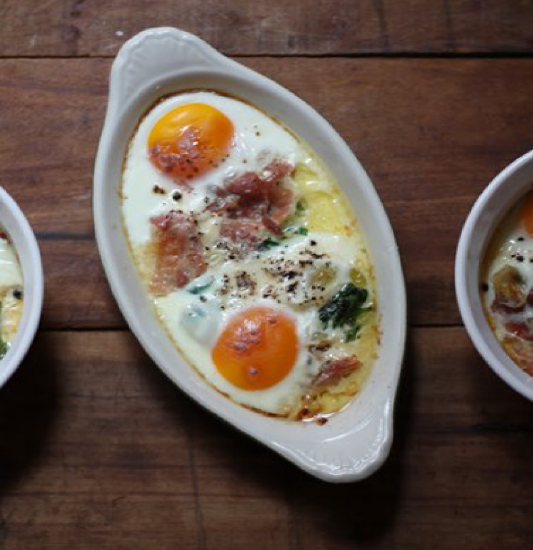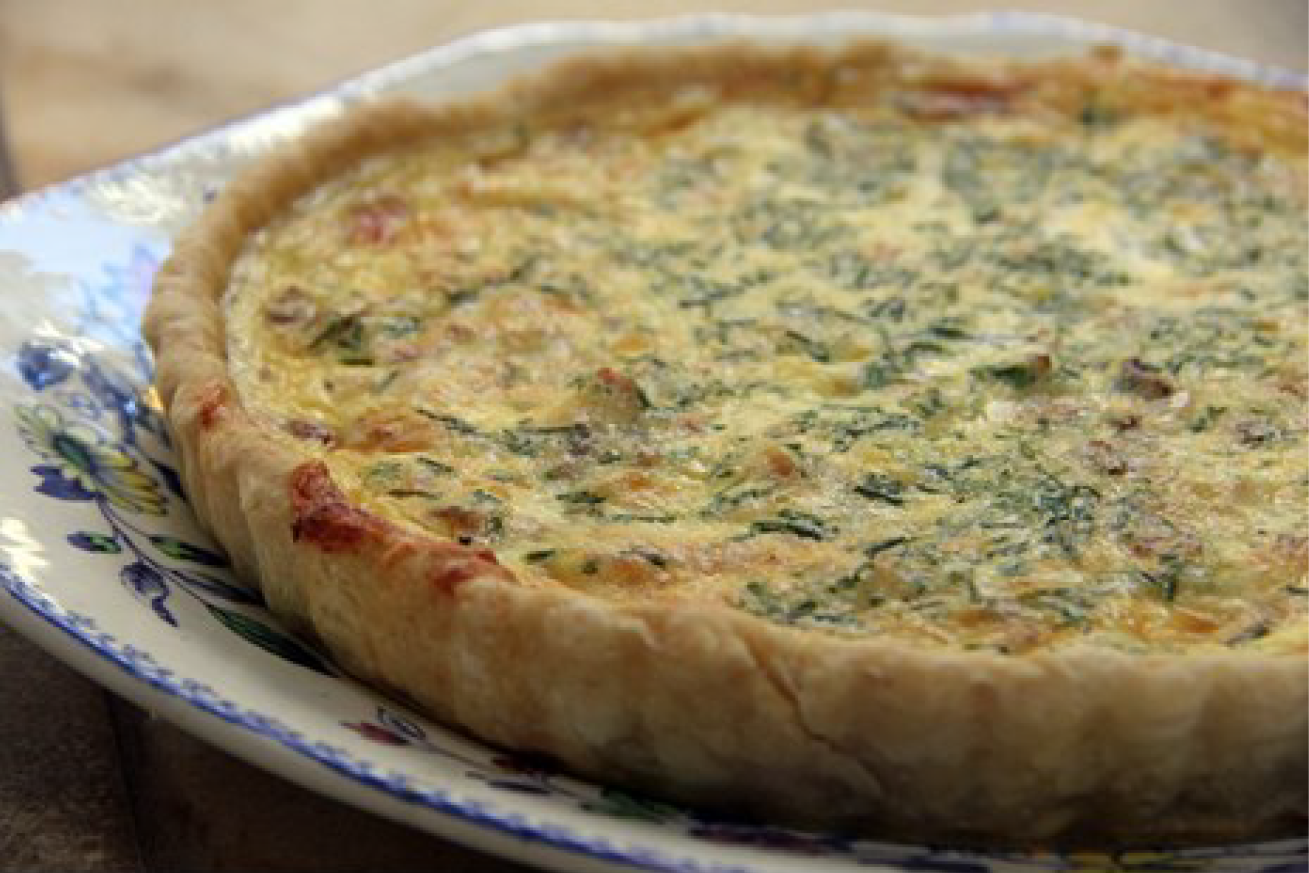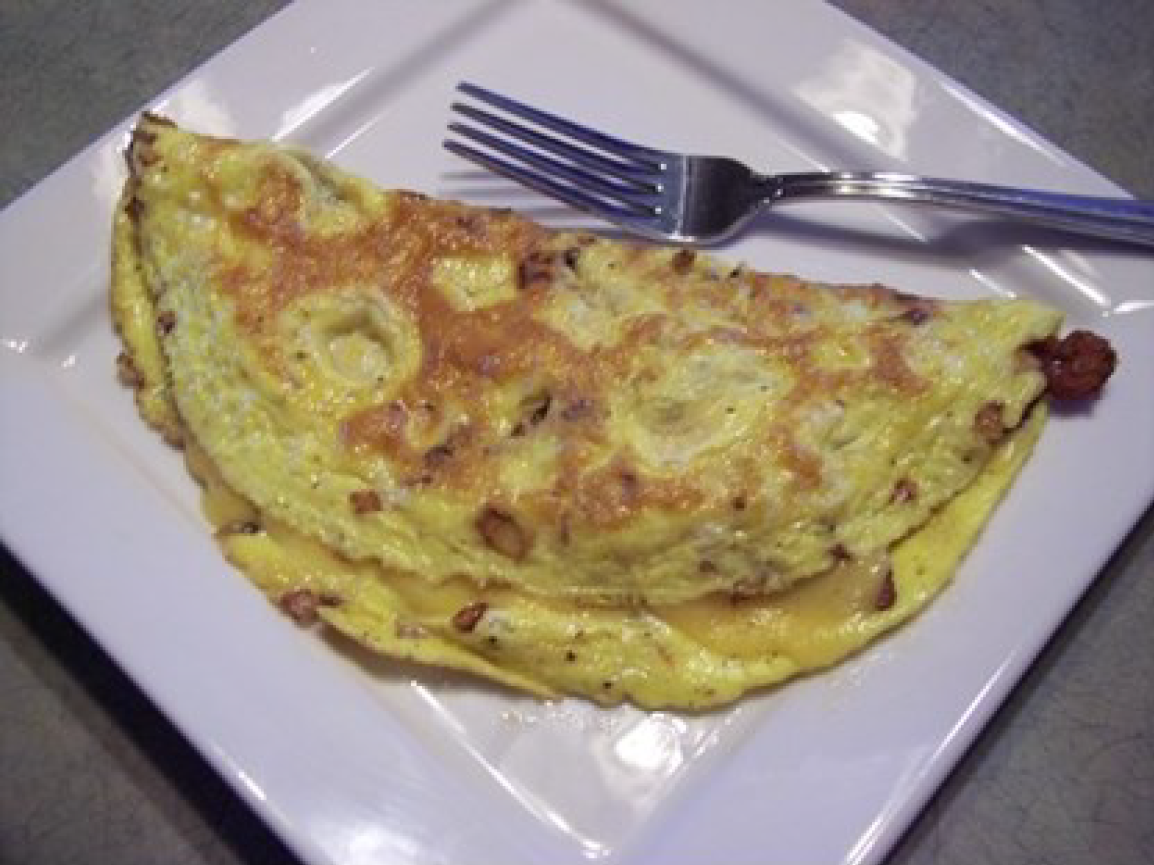2.4: Egg Based Recipes
- Page ID
- 21420
\( \newcommand{\vecs}[1]{\overset { \scriptstyle \rightharpoonup} {\mathbf{#1}} } \)
\( \newcommand{\vecd}[1]{\overset{-\!-\!\rightharpoonup}{\vphantom{a}\smash {#1}}} \)
\( \newcommand{\id}{\mathrm{id}}\) \( \newcommand{\Span}{\mathrm{span}}\)
( \newcommand{\kernel}{\mathrm{null}\,}\) \( \newcommand{\range}{\mathrm{range}\,}\)
\( \newcommand{\RealPart}{\mathrm{Re}}\) \( \newcommand{\ImaginaryPart}{\mathrm{Im}}\)
\( \newcommand{\Argument}{\mathrm{Arg}}\) \( \newcommand{\norm}[1]{\| #1 \|}\)
\( \newcommand{\inner}[2]{\langle #1, #2 \rangle}\)
\( \newcommand{\Span}{\mathrm{span}}\)
\( \newcommand{\id}{\mathrm{id}}\)
\( \newcommand{\Span}{\mathrm{span}}\)
\( \newcommand{\kernel}{\mathrm{null}\,}\)
\( \newcommand{\range}{\mathrm{range}\,}\)
\( \newcommand{\RealPart}{\mathrm{Re}}\)
\( \newcommand{\ImaginaryPart}{\mathrm{Im}}\)
\( \newcommand{\Argument}{\mathrm{Arg}}\)
\( \newcommand{\norm}[1]{\| #1 \|}\)
\( \newcommand{\inner}[2]{\langle #1, #2 \rangle}\)
\( \newcommand{\Span}{\mathrm{span}}\) \( \newcommand{\AA}{\unicode[.8,0]{x212B}}\)
\( \newcommand{\vectorA}[1]{\vec{#1}} % arrow\)
\( \newcommand{\vectorAt}[1]{\vec{\text{#1}}} % arrow\)
\( \newcommand{\vectorB}[1]{\overset { \scriptstyle \rightharpoonup} {\mathbf{#1}} } \)
\( \newcommand{\vectorC}[1]{\textbf{#1}} \)
\( \newcommand{\vectorD}[1]{\overrightarrow{#1}} \)
\( \newcommand{\vectorDt}[1]{\overrightarrow{\text{#1}}} \)
\( \newcommand{\vectE}[1]{\overset{-\!-\!\rightharpoonup}{\vphantom{a}\smash{\mathbf {#1}}}} \)
\( \newcommand{\vecs}[1]{\overset { \scriptstyle \rightharpoonup} {\mathbf{#1}} } \)
\( \newcommand{\vecd}[1]{\overset{-\!-\!\rightharpoonup}{\vphantom{a}\smash {#1}}} \)
\(\newcommand{\avec}{\mathbf a}\) \(\newcommand{\bvec}{\mathbf b}\) \(\newcommand{\cvec}{\mathbf c}\) \(\newcommand{\dvec}{\mathbf d}\) \(\newcommand{\dtil}{\widetilde{\mathbf d}}\) \(\newcommand{\evec}{\mathbf e}\) \(\newcommand{\fvec}{\mathbf f}\) \(\newcommand{\nvec}{\mathbf n}\) \(\newcommand{\pvec}{\mathbf p}\) \(\newcommand{\qvec}{\mathbf q}\) \(\newcommand{\svec}{\mathbf s}\) \(\newcommand{\tvec}{\mathbf t}\) \(\newcommand{\uvec}{\mathbf u}\) \(\newcommand{\vvec}{\mathbf v}\) \(\newcommand{\wvec}{\mathbf w}\) \(\newcommand{\xvec}{\mathbf x}\) \(\newcommand{\yvec}{\mathbf y}\) \(\newcommand{\zvec}{\mathbf z}\) \(\newcommand{\rvec}{\mathbf r}\) \(\newcommand{\mvec}{\mathbf m}\) \(\newcommand{\zerovec}{\mathbf 0}\) \(\newcommand{\onevec}{\mathbf 1}\) \(\newcommand{\real}{\mathbb R}\) \(\newcommand{\twovec}[2]{\left[\begin{array}{r}#1 \\ #2 \end{array}\right]}\) \(\newcommand{\ctwovec}[2]{\left[\begin{array}{c}#1 \\ #2 \end{array}\right]}\) \(\newcommand{\threevec}[3]{\left[\begin{array}{r}#1 \\ #2 \\ #3 \end{array}\right]}\) \(\newcommand{\cthreevec}[3]{\left[\begin{array}{c}#1 \\ #2 \\ #3 \end{array}\right]}\) \(\newcommand{\fourvec}[4]{\left[\begin{array}{r}#1 \\ #2 \\ #3 \\ #4 \end{array}\right]}\) \(\newcommand{\cfourvec}[4]{\left[\begin{array}{c}#1 \\ #2 \\ #3 \\ #4 \end{array}\right]}\) \(\newcommand{\fivevec}[5]{\left[\begin{array}{r}#1 \\ #2 \\ #3 \\ #4 \\ #5 \\ \end{array}\right]}\) \(\newcommand{\cfivevec}[5]{\left[\begin{array}{c}#1 \\ #2 \\ #3 \\ #4 \\ #5 \\ \end{array}\right]}\) \(\newcommand{\mattwo}[4]{\left[\begin{array}{rr}#1 \amp #2 \\ #3 \amp #4 \\ \end{array}\right]}\) \(\newcommand{\laspan}[1]{\text{Span}\{#1\}}\) \(\newcommand{\bcal}{\cal B}\) \(\newcommand{\ccal}{\cal C}\) \(\newcommand{\scal}{\cal S}\) \(\newcommand{\wcal}{\cal W}\) \(\newcommand{\ecal}{\cal E}\) \(\newcommand{\coords}[2]{\left\{#1\right\}_{#2}}\) \(\newcommand{\gray}[1]{\color{gray}{#1}}\) \(\newcommand{\lgray}[1]{\color{lightgray}{#1}}\) \(\newcommand{\rank}{\operatorname{rank}}\) \(\newcommand{\row}{\text{Row}}\) \(\newcommand{\col}{\text{Col}}\) \(\renewcommand{\row}{\text{Row}}\) \(\newcommand{\nul}{\text{Nul}}\) \(\newcommand{\var}{\text{Var}}\) \(\newcommand{\corr}{\text{corr}}\) \(\newcommand{\len}[1]{\left|#1\right|}\) \(\newcommand{\bbar}{\overline{\bvec}}\) \(\newcommand{\bhat}{\widehat{\bvec}}\) \(\newcommand{\bperp}{\bvec^\perp}\) \(\newcommand{\xhat}{\widehat{\xvec}}\) \(\newcommand{\vhat}{\widehat{\vvec}}\) \(\newcommand{\uhat}{\widehat{\uvec}}\) \(\newcommand{\what}{\widehat{\wvec}}\) \(\newcommand{\Sighat}{\widehat{\Sigma}}\) \(\newcommand{\lt}{<}\) \(\newcommand{\gt}{>}\) \(\newcommand{\amp}{&}\) \(\definecolor{fillinmathshade}{gray}{0.9}\)Shirred Eggs with Ham
Makes 1 serving

Shirred eggs (also known as baked eggs) is a dish in which eggs have been baked in a flat-bottomed dish; the name originates from the type of dish in which it was traditionally baked. It is considered a simple and reliable dish that can be easily varied and expanded upon. An alternative way of cooking is to crack the eggs into individual ramekins and cook them in a water bath, creating the French dish, eggs en cocotte.
Equipment:
- Measuring spoons
- Scale
- Box grater
- Ramekins (white ceramic in dry storage)
Ingredients:
- 2 tablespoons whole butter, melted
- 2 thin slices ham (about 1/2 ounce)
- 2 eggs
- Salt and freshly ground black pepper
- 1 tablespoon warm, heavy cream
- 1 tablespoon grated Swiss cheese
- Splash of dry sherry
Procedure:
- Preheat the oven to 325 degrees.
- Brush the interior of the ramekin with melted butter. Line the ramekin with the slice of ham. Break the eggs into a cup and slide them carefully into the ramekin on top of the ham. Season with salt and pepper.
- Put the ramekins on a half-sheet pan lined with parchment paper. Bake until the eggs begin to set, 8 to 10 minutes, Remove from the oven, then add the warm cream and cheese. Splash with sherry and return to the oven and bake until the eggs are cooked and the cheese is melted.
- The yolks should still be "jiggly" and not cooked "hard." Serve hot.
Quiche Lorraine
Makes 1 quiche to serve 6

Quiche Lorraine is a popular variant that was originally an open pie with a filling of custard with smoked bacon or lardons (pieces of pork fat). It was only later that cheese was added to the quiche Lorraine.
The origin of quiche Lorraine comes from Alsace/Lorraine (a region of France) and the original quiche Lorraine had a rustic style: it was cooked in a cast-iron pan and the pastry edges were not crimped. Today, quiche Lorraine is served throughout France and has a modern look with a crimped pastry crust. In France, the version is unlike that served in the United States; the bacon is cubed, no onions are added and the custard base is thicker.
Baking blind (sometimes called pre-baking) is the process of baking a piecrust or other pastry without the filling. Blind baking a piecrust is necessary when it will be filled with an unbaked filling (such as with pudding or cream pies), in which case the crust must be fully baked.
Equipment:
- Pie or quiche pan
- Scale
- Box grater
- Fork
- Measuring cups
Ingredients:
- 4 ounces bacon, diced
- 2 ounces Swiss or Gruyere cheese, shredded
- 1 (10-inch) pie crust (prick the pie crust with the tines of a fork)
- (Beans for blind baking-in dry storage)
- 4 eggs
- 1 3/4 cups milk
- 4 fluid ounces heavy cream
- Salt and freshly ground black pepper (to taste)
- Pinch of nutmeg
Procedure:
- Preheat the oven to 350 degrees.
- Fry the bacon in a small skillet until crispy. Drain on paper towels and set aside. (Set aside the bacon grease until it cools, and then dispose.)
- Place the piecrust on a baking sheet and put a piece of parchment paper on top of the piecrust, pressing down lightly. Arrange a layer of dried beans evenly over the paper. Bake until the edges of the crust is lightly browned, about 12 minutes. Remove the crust from the oven and cool for a minute or two. Carefully grasp the corners of the parchment and lift the weights out of the piecrust. Allow the piecrust to cool for about 5 minutes.
- Arrange the bacon and cheese in the piecrust.
- To make the custard, combine the eggs, milk, and cream and season with salt, pepper and nutmeg. Pour the custard over the bacon and cheese and bake until the custard sets and is golden brown, about 1 hour. *The center should be a little "jiggly" but it will set as it cools. (Residual heat)
- Remove from the oven and cool for about 10 minutes before cutting into wedges to serve. (A pizza cutter can be used to cut, then lift out with a small spatula.)
Ham and Cheese Omelet
Makes 1 servings

Equipment:
- Scale
- Box grater
- Small mixing bowl
- Non-stick medium-size skillet
- Fork
Ingredients:
- 3 eggs
- Salt and freshly ground black pepper to taste
- 1 tablespoon butter
- 1/2 ounce diced ham
- 1 tablespoon chopped green onions or chives, plus more for garnish
- 2 tablespoons shredded cheddar
Procedure:
- In a small bowl, combine the eggs and season with salt and pepper. Whisk the eggs together (use a fork) until frothy--we want to get some air in there).
- Melt the butter in a small to medium non-stick skillet over medium-high heat. Add the ham and cook, stirring, until just heated through.
- Carefully pour the eggs into the skillet. Stir the eggs gently as they cook. Stop when they begin to set. Lift the edges as the omelet cooks to allow the raw eggs to run underneath.
- When the eggs are nearly set, add the green onions (or chives) and cheese, and gently fold the front of the egg over and roll the omelet onto a plate. Serve warm.
- Garnish with green onions or chives.


